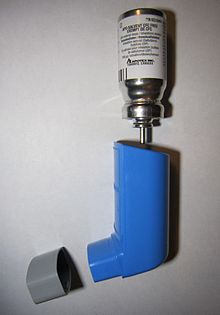Prevention of heart attacks and strokes
There are two distinct uses of aspirin for prophylaxis of cardiovascular events: primary prevention and secondary prevention. Primary prevention is about decreasing strokes and heart attacks in the general population of those who have no diagnosed heart or vascular problems. Secondary prevention concerns patients with known cardiovascular disease.[45]
Low doses of aspirin are recommended for the secondary prevention of strokes and heart attacks. For both males and females diagnosed with cardiovascular disease, aspirin reduces the chance of a heart attack and ischaemic stroke by about a fifth. This translates to an absolute rate reduction from 8.2% to 6.7% of such events per year for people already with cardiovascular disease. Although aspirin also raises the risk of hemorrhagic stroke and other major bleeds by about twofold, these events are rare, and the balance of aspirin's effects is positive. Thus, in secondary prevention trials, aspirin reduced the overall mortality by about a tenth.[45]
For persons without cardiovascular problems, the benefits of aspirin are unclear. In the primary prevention trials aspirin decreased the overall incidence of heart attacks and ischaemic strokes by about a tenth. However, since these events were rare, the absolute reduction of their rate was low: from 0.57% to 0.51% per year. In addition, the risks of hemorrhagic strokes and gastrointestinal bleeding almost completely offset the benefits of aspirin. Thus, in the primary prevention trials aspirin did not change the overall mortality rate.[45] Further trials are in progress.[45]
The expert bodies diverge in their opinions regarding the use of aspirin for primary prevention, such as can be accomplished by including aspirin in a polypill for the general population. The US Government Preventive Services Task Force recommended making individual case by case choice based on the estimated future risk and patient's preferences.[46][47] On the other hand, Antithrombotic Trialists’ Collaboration argued that such recommendations are unjustified since the relative reduction of risk in the primary prevention trials of aspirin was same for persons in high- and low-risk groups and did not depend on the blood pressure. The Collaboration suggested statins as the alternative and more effective preventive medication

